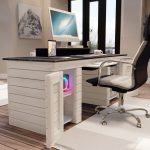In the fast-paced world of today, where workspaces often double as havens for creativity and productivity, a cluttered desk can swiftly turn into a hindrance rather than a catalyst for ideas. The quest for an organized workspace is not merely about aesthetics; it’s a journey towards fostering mental clarity and enhancing efficiency. This article delves into the realm of DIY desk organizer projects, empowering you with creative, cost-effective solutions to transform your chaotic workstation into a sanctuary of productivity.
Section 1: Understanding the Link between Chaos and Creativity
Untangling the Web of Chaos: Before diving into the DIY projects, it’s crucial to understand the paradoxical relationship between chaos and creativity. While some argue that a messy desk fuels creativity by mimicking the chaos of the creative process, research suggests that clutter competes for our attention, leading to decreased focus and increased stress. Thus, the aim here is to strike a balance, creating an environment that inspires without overwhelming.
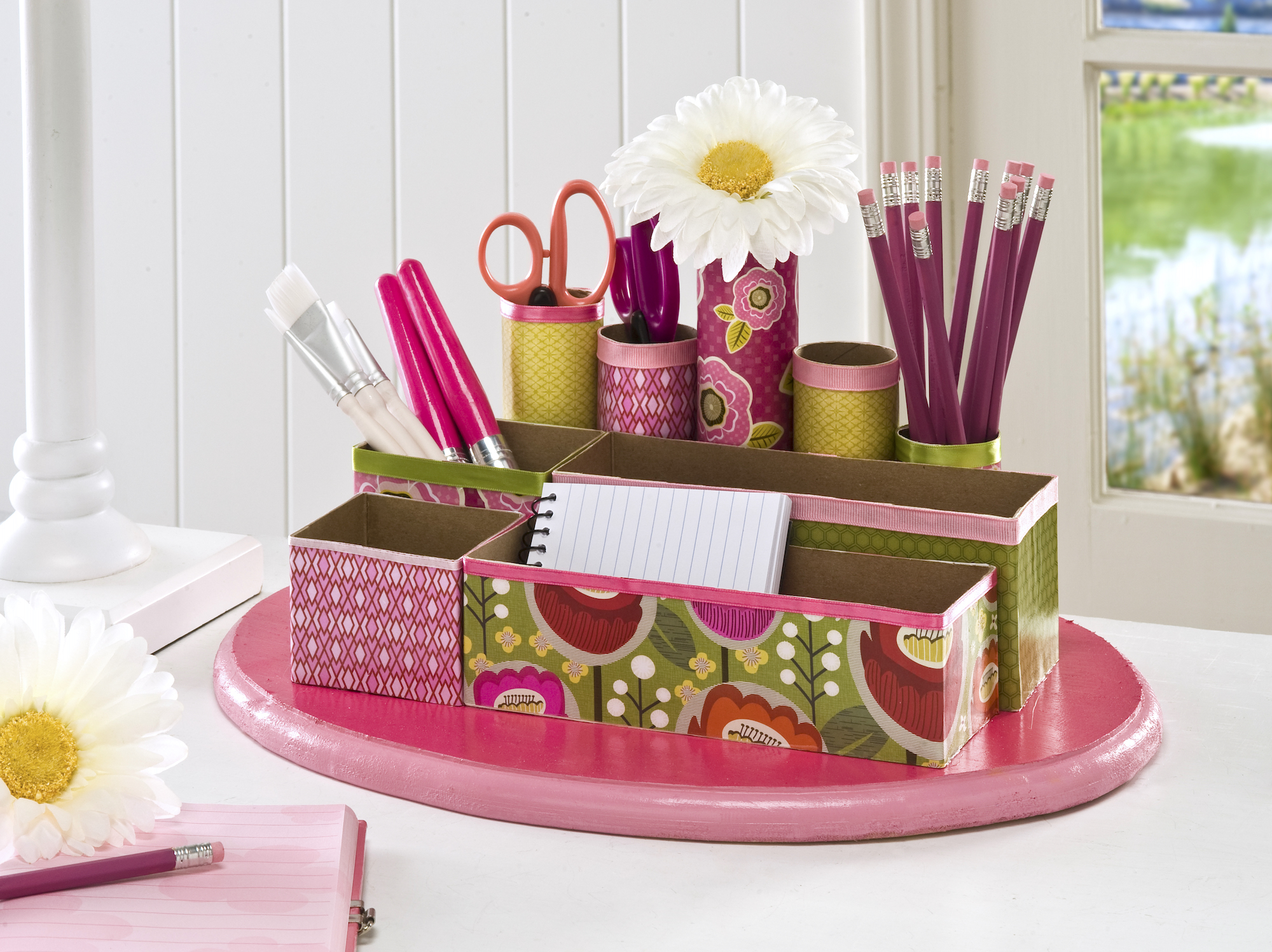
Section 2: Assessing Your Needs and Space
Personalized Planning: Begin by assessing your desk essentials and identifying the primary sources of clutter. Consider the nature of your work, the tools you frequently use, and how you interact with your space. This step is crucial in designing organizers that cater specifically to your needs, ensuring both functionality and personalization.
Section 3: Repurposing Household Items
Innovative Upcycling: One of the joys of DIY projects lies in giving new life to old items. Transform empty cans into pen holders, repurpose shoeboxes as drawer dividers, or turn an old cheese grater into a unique paperclip holder. These upcycling ideas not only declutter your workspace but also contribute to a sustainable lifestyle.
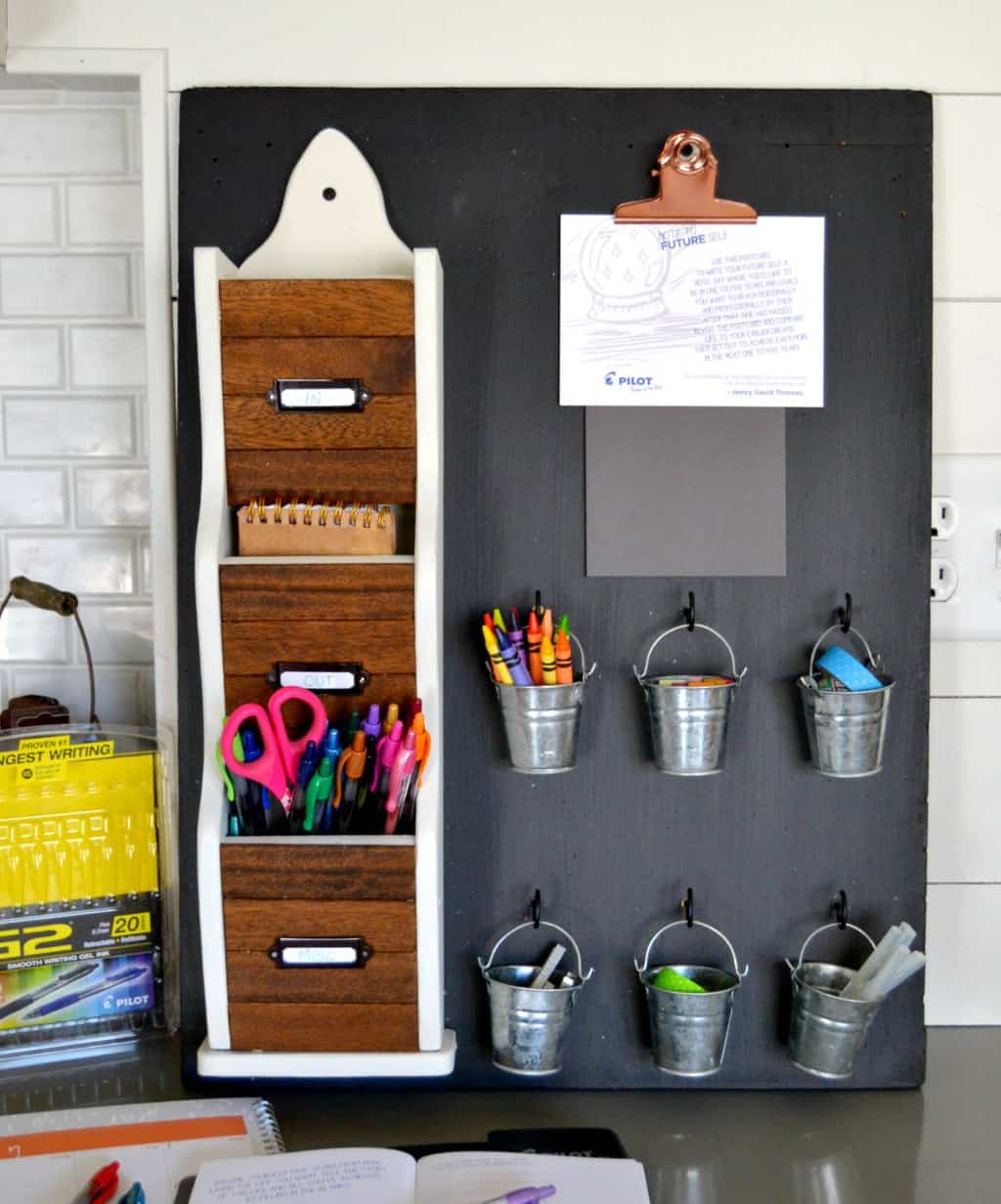
Section 4: Crafting with Natural Elements
Nature’s Touch: Incorporating natural elements into your desk organization can have a calming effect on the mind, promoting focus. Consider making a desktop planter from terracotta pots or using driftwood as a minimalist desk organizer. These additions introduce a touch of tranquility amidst the hustle and bustle of work.
Section 5: The Art of Cable Management
Taming the Wire Monsters: Unruly cables can quickly turn a desk into a tangled mess. Create DIY cable organizers using washi tape, Velcro strips, or even old toilet paper rolls covered in fabric. Not only will this clear the visual clutter, but it will also make plugging and unplugging devices a breeze.
Section 6: Building Vertical Storage Solutions
Space-Savvy Solutions: When horizontal space is limited, think vertically. A DIY pegboard mounted on the wall can hold everything from scissors to notes, while floating shelves offer additional storage without taking up desk real estate. Get creative with wooden crates or even stacked magazine holders turned on their side for instant, stylish storage.
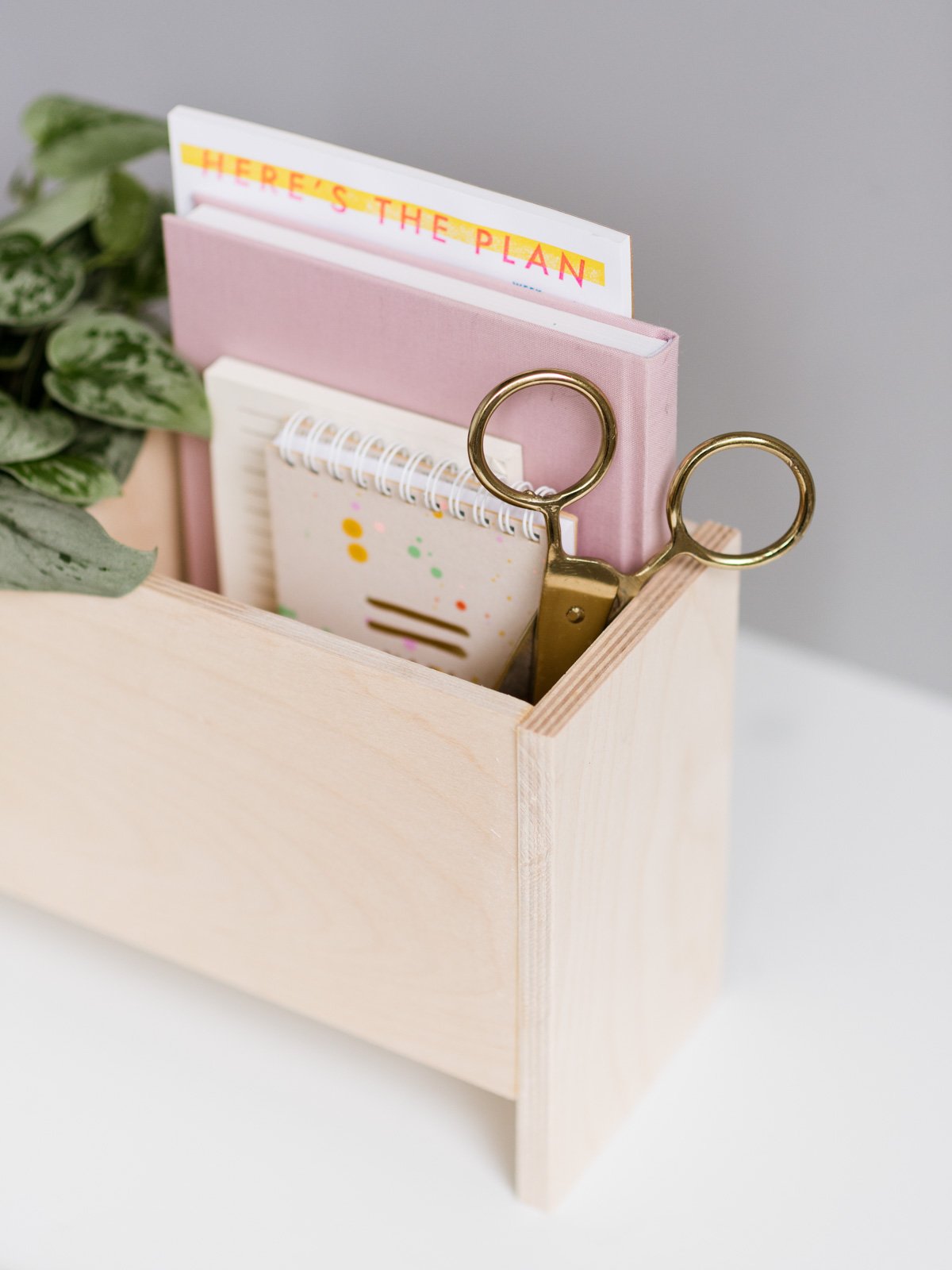
Section 7: DIY Drawer Organizers
Customizing Hidden Spaces: Don’t neglect the potential of drawers. Custom DIY inserts made from cardboard, foam board, or even old plastic containers can be trimmed and arranged to fit perfectly, keeping small items like paper clips, sticky notes, and USB drives in order.
Section 8: Integrating Time Management Tools
Visual Cues for Productivity: Combine organization with time management by crafting a DIY desktop calendar or a to-do list board. Use chalkboard paint on a small plank, or create a magnetic board with a painted cookie sheet, adorned with magnets for reminders and deadlines. This visual reminder keeps you on track and motivated.
Section 9: Personalizing with Style
Expressive Workspace: DIY doesn’t mean sacrificing style. Infuse your personality into your organizers by choosing materials, colors, and designs that resonate with you. Whether it’s painting your pen holders in your favorite hues or adding motivational quotes to your desk accessories, these personal touches foster a sense of ownership and joy in your workspace.
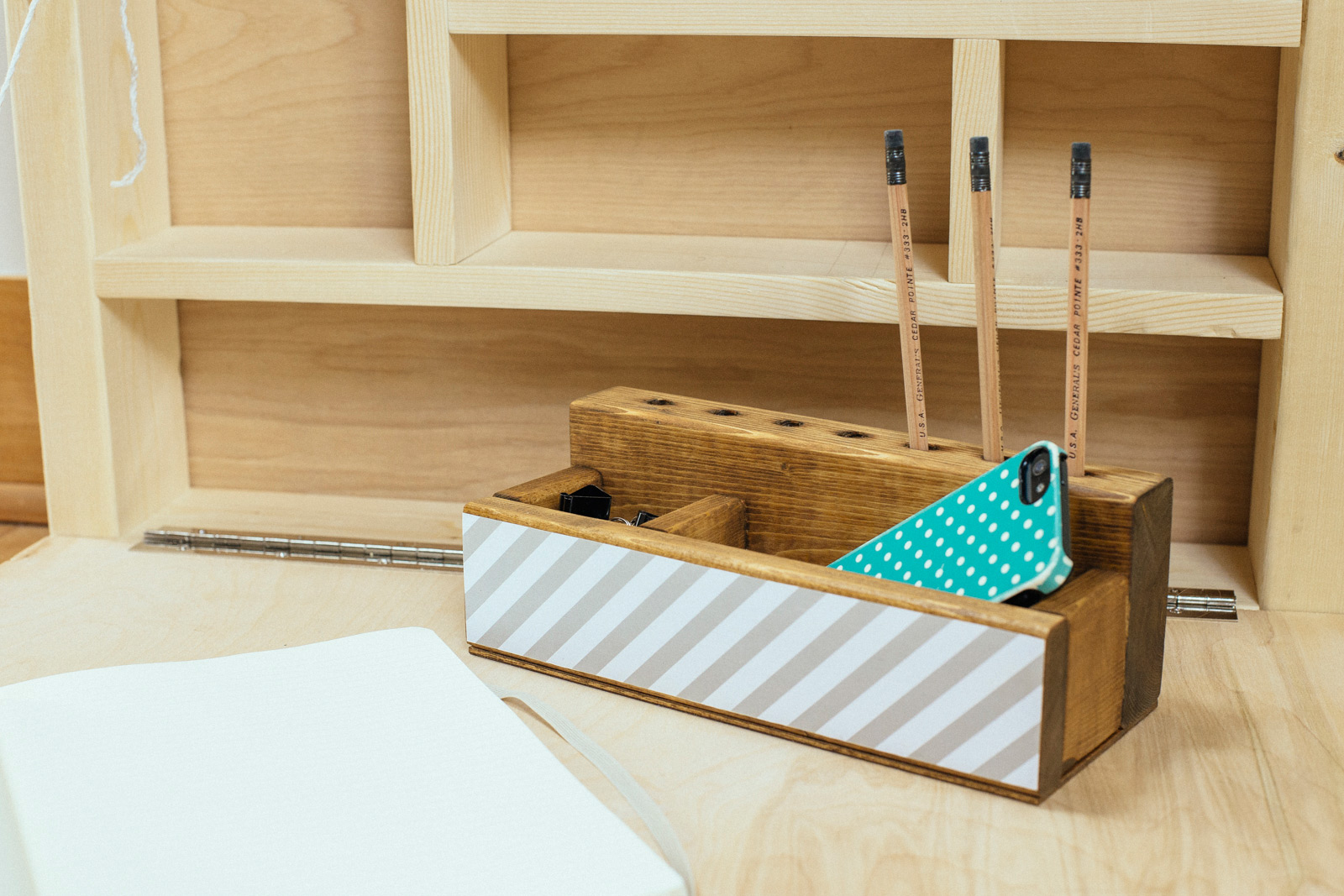
Section 10: The Transformative Power of DIY
Cultivating Creativity and Productivity: As you embark on your DIY journey, remember that the process itself is part of the transformation. Each project, no matter how small, fosters creativity, problem-solving skills, and a sense of accomplishment. By turning chaos into organized beauty, you’re not just enhancing your workspace but also nurturing an environment that promotes clear thinking, increased productivity, and a refreshed perspective on work and creativity.
DIY Lighting Solutions: Illuminating Your Workspace for Optimal Inspiration
Section 1: The Importance of Lighting in Workspace Design
Lighting the Way to Productivity: Beyond the organization of your desk, lighting plays a pivotal role in setting the mood, reducing eye strain, and enhancing productivity. The right illumination can elevate your workspace from functional to inspirational, impacting creativity and overall well-being.
Section 2: Assessing Your Lighting Needs Shedding
Light on Your Workspace: Begin by evaluating the natural light available in your workspace and identifying areas that need supplementation. Consider the tasks performed at your desk, such as reading, writing, or computer work, which all have different lighting requirements.
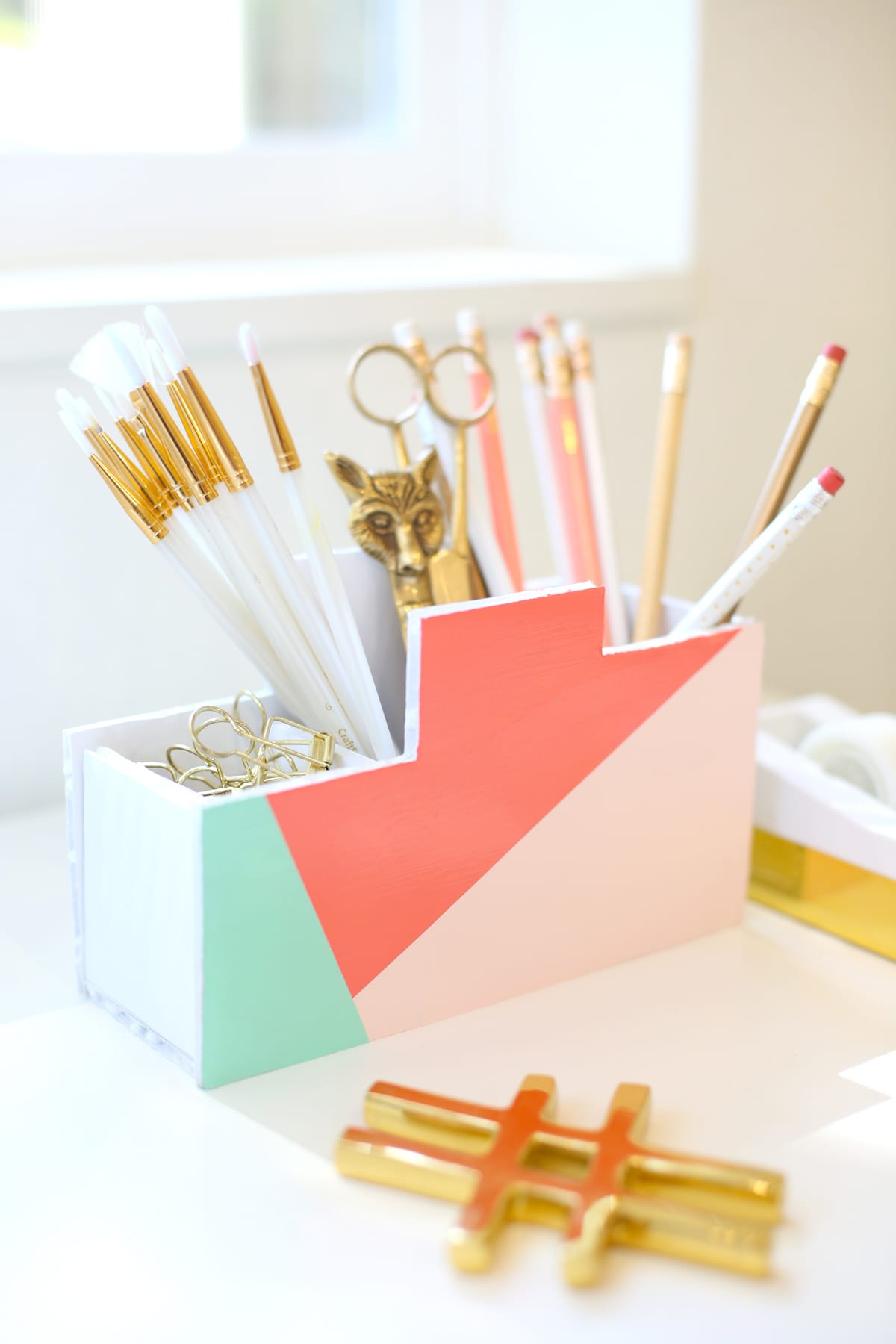
Section 3: DIY Desk Lamp Projects Crafting
Your Own Illumination: Embrace DIY by transforming everyday items into unique desk lamps. For instance, repurpose vintage books, mason jars, or even wine bottles into charming and functional lamps. Pair these with energy-efficient LED bulbs for a sustainable and stylish solution.
Section 4: Creative Pendant and Hanging Lights
Lifting the Mood with Suspended Lights: If your workspace allows, hanging pendant lights can add both task lighting and ambiance. DIY projects could involve creating geometric wire frames wrapped in string lights or even upcycling glass jars as minimalist pendant lights. Proper placement ensures focused light where you need it most.
Section 5: Natural Light Enhancement Maximizing
Daylight: Utilize DIY window treatments to optimize natural light. Create adjustable shades or sheer curtains from lightweight fabrics that allow sunlight to filter in gently while providing control over glare. Reflective surfaces, like DIY mirror panels or metallic accents, can also amplify natural light.
Section 6: Task Lighting Solutions Targeted
Illumination: For detailed work, consider DIY task lights that can be easily moved or adjusted. Make a flexible arm lamp using plumbing pipes or a simple clip-on light using a gooseneck lamp clamp attached to a wooden base. Ensure these lights are positioned to avoid casting shadows or causing eye fatigue.
Section 7: Ambient Lighting for Mood and Relaxation
Setting the Tone: Complement task lighting with ambient lighting to create a relaxing atmosphere. DIY options include string lights draped around your workspace, paper lanterns suspended from the ceiling, or even a homemade Himalayan salt lamp for a soothing glow.
In conclusion, the path from chaos to creativity through DIY desk organization is a fulfilling endeavor that not only tidies up your physical space but also enriches your mental landscape. With each personalized touch, you’re building a sanctuary where inspiration and productivity can flourish in harmony. So, roll up your sleeves, let your imagination soar, and watch as your workspace transforms into a haven of efficiency and creativity.

